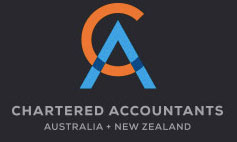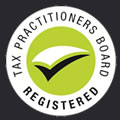11 December 2020
The Federal Budget measure of allowing businesses to fully write-off eligible assets is a boon to Australian businesses, even though the measure is temporary. Just to recap, businesses with aggregated annual turnover of less than $5 billion will be able to deduct the full cost of eligible capital assets acquired from 7:30pm AEDT on 6 October 2020 (Budget night) and first used or installed by 30 June 2022.
“Full expensing” in the year of first use will apply to new depreciable assets and the cost of improvements to existing eligible assets. For small- and medium-sized businesses (with aggregated annual turnover of less than $50 million), full expensing also applies to second-hand assets.
Businesses with aggregated annual turnover between $50 million and $500 million can still deduct the full cost of eligible second-hand assets costing less than $150,000 that are purchased by 31 December 2020 under the existing instant asset write-off. Also businesses that hold assets eligible for the existing $150,000 instant asset write-off will have an extra six months, until 30 June 2021, to first use or install those assets.
Small businesses (with aggregated annual turnover of less than $10 million) can deduct the balance of their simplified depreciation pool at the end of the income year while full expensing applies. The rules that prevent small businesses from re-entering the simplified depreciation regime for five years if they opt out will continue to be suspended.
Some existing conditions remain
The small business entities capital allowance provisions has always contained a section that permits assets that cost below a certain value to be written off 100% in the year the asset is first used or is installed ready for use for a taxable purpose. Initially, this amount was $1,000 but it has been subject to significant change in recent years.
On 12 March 2020, the Federal Government made announcements about stimulus packages intended to ameliorate the impending economic impact of COVID-19. If, in the period beginning on 12 March 2020 and ending on 30 June 2021, a small business taxpayer started to hold an asset and started to use it or have it installed ready for use for a taxable purpose, and the asset cost $150,000 or more, the decline in value deduction in relation to the asset for the year is 57.5% with the remaining amount being added to the general small business pool.
The new full expensing rules, applicable from Budget time on 6 October 2020, means that there is no limit on the cost of an eligible asset that can be written off by 100%. The backing business investment initiative will still be applicable to assets costing $150,000 or more and that were held and installed ready for use in the period 12 March 2020 to 6 October 2020.
The general small business pool is, broadly, a running total of the costs of fixed assets acquired by a small business entity that have not yet been depreciated and deducted for tax purposes. The pool, due to its method of operation, spreads the cost of assets over a number of years for tax purposes. The pool balance is added to when new assets are acquired and reduced when depreciation tax deductions are claimed, and balancing adjustment events occur. The “termination value” of an asset to which a balancing adjustment event has occurred is subtracted from the pool.
The small business capital allowance provisions have always contained a de-minimus provision that permits the total value of the pool to be written off when it falls below a certain value.
Meeting the required conditions
A number of conditions must be satisfied for assets to be full expensed. First of all the asset must be used in a business. Accordingly the full expensing of assets does not apply to an employee who has purchased a work-related asset. Also no balancing adjustment event must occur to the asset in the current year.
Note also that some assets are excluded such as capital works and assets allocated to a software development pool.
In most circumstances, a depreciating asset is “held” when the taxpayer becomes the legal owner of the asset, which is frequently not at the time of purchase or order. The taxpayer must start to use the asset, or have it installed ready for use, for a taxable purpose in the year (“the current year”) in which the taxpayer wants to write-off 100% of the cost of the asset.
Anti-avoidance provision
It must be the case that the entity did not have a pre-commitment to acquire the asset prior to Budget night on 6 October 2020. Further, the asset must not have been held prior to that time. If a business had already entered into a commitment or had, in fact, purchased such an asset prior to that time, there is an obvious tax planning technique that could be engaged in to enable the new full expensing rules to apply to the asset.
The strategy targeted is where an order is cancelled and the business enters into a new purchase contract after 6 October. If an asset had already been held, the asset can be sold and a new one purchased after that time. Due to this, the new rules contain an anti-avoidance provision that seeks to prevent this type of tax planning where the asset acquired after budget time on 6 October 2020 is “identical or substantially similar” to the asset that was purchased or held prior to that time. Also, the actions engaged in by the taxpayer must be for the purpose of ensuring the asset started to be held at or after Budget time.
Other considerations
One important point is that when an asset on which full expensing has been claimed is later disposed of for consideration, that the full amount of the consideration will need to be returned as assessable income due to a balancing adjustment event.
So, the new full expensing legislation does not give a taxpayer any extra tax deductions. It just gives them sooner than before.
For most business entities, particularly small businesses, the depreciation recognised for accounting purposes is often equal to that claimed for tax purposes. With assets being able to be fully expensed for tax purposes, it could come about that a business will re-consider whether this is the best accounting policy. The full expensing of assets obviously lowers profits and might, artificially, put a business into a loss situation.
Depending on who uses the financial statements of the business, having a poor accounting result may not be desirable. For example, financiers might prefer to see a better accounting outcome than might result if full expensing of assets is adopted for accounting purposes.
In arm’s length partnerships, a proper accounting for the depreciation of fixed assets may give a more palatable outcome when it comes to distribution of profits. If partners are being admitted or are departing, the business owners may prefer a profit and loss statement that shows a fair depreciation of fixed assets rather than an artificial tax number.




